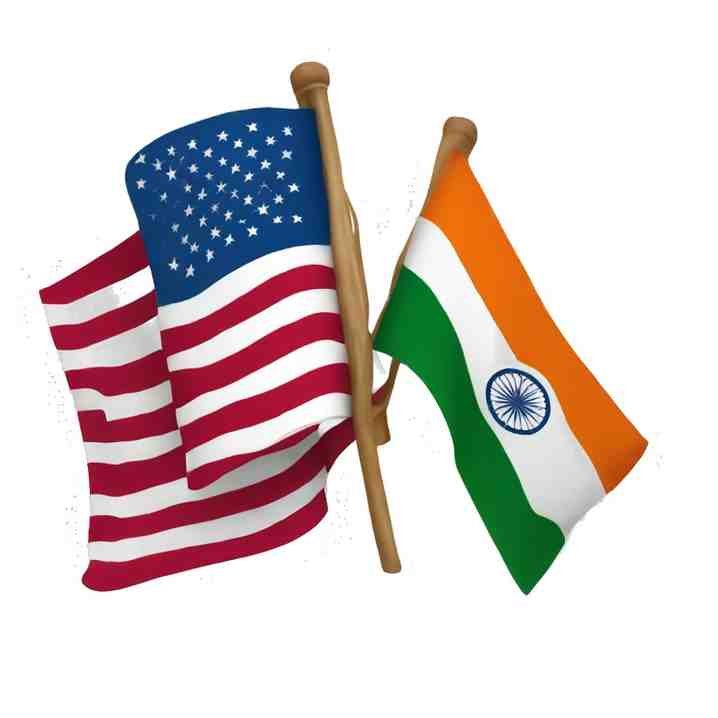The recent announcement by the United States to double tariffs on select Indian exports has sparked a flurry of debate within diplomatic and trade circles. At present, only China, India, and Turkey have been hit with such a move. The move, justified by Washington as a response to India’s continued import of discounted crude oil from Russia, marks a significant shift in India-US trade dynamics.
This action comes against the backdrop of the Ukraine conflict, a recalibrated global energy order, and India’s strategic hedging in its foreign policy. As India increasingly pursues an independent stance in global energy diplomacy, tensions with traditional allies such as the United States are bound to rise.
The Trigger: Russian Oil and India’s Strategic Autonomy
India’s decision to continue purchasing oil from Russia, at significant discounts, despite Western sanctions, has been a sore point for the US since the onset of the Ukraine war in 2022. While European nations also maintained select energy linkages with Russia initially, New Delhi’s volumes and assertive defense of its energy choices have attracted particular scrutiny.
The doubling of tariffs appears to be Washington’s way of sending a strong signal that energy trade decisions are no longer value-neutral, especially when they undercut the efficacy of its sanction regimes.
However, India has consistently framed its energy policy as one rooted in pragmatism rather than ideology. With a population of over 1.4 billion and growing developmental needs, securing affordable energy is non-negotiable.
India has also maintained that its dealings with Russia are not in violation of any international law and that it’s refining of Russian crude for re-export is part of legitimate global trade flows. India has condemned Trump’s announcement, calling the move “unfair, unjustified and unreasonable,”, particularly in an era where multipolarity is fast becoming the norm.
Economic Fallout: Trade, Industry, and Sentiment
The immediate consequence of the tariff hike is likely to be felt in sectors such as textiles, pharmaceuticals, engineering goods, and agriculture — areas where Indian exports to the US have traditionally been strong. With increased duties, Indian goods may lose their competitive edge in the American market, hurting small and medium exporters.
This is especially troubling at a time when India is trying to boost its manufacturing sector under the ‘Make in India’ initiative and expand its export base to support economic recovery post-COVID.
Investor sentiment may also take a hit. Global companies eyeing India as an alternative to China could perceive the tariff war as an indicator of growing uncertainty in India’s external trade policy landscape.
Moreover, retaliatory measures by India, though not yet announced, could escalate the situation into a full-blown trade dispute. A tit-for-tat tariff strategy would erode the trade surplus India currently enjoys with the US, which stood at $41.18 billion in 2024–25.
Strategic Consequences: A Geopolitical Tightrope
Beyond the economic metrics, the tariff escalation brings to the surface a deeper strategic tension in India-US relations. While both countries have cooperated closely under forums like the Quad and IPEF, divergences persist on issues such as Iran, Russia, climate obligations, and now energy policy.
For India, maintaining strategic autonomy has been a cornerstone of its foreign policy doctrine. Aligning too closely with one camp, especially when global power structures are in flux, could undermine its leverage with other powers, including Russia, China, and the Gulf countries.
The US, on the other hand, faces a dilemma. On one side, it seeks India’s partnership to counter China and stabilize the Indo-Pacific. On the other hand, it appears increasingly intolerant of India’s independent choices that dilute the West’s collective pressure on Russia.
The tariffs, then, must be viewed not just as an economic tool but as a geopolitical lever, one that signals Washington’s discomfort with India’s non-alignment 2.0. However, such tactics may backfire if they alienate India from its emerging role as a swing state in a fragmented global order.
India’s Response: Resilience or Retaliation?
India’s initial response to the tariff hike has been restrained. Official statements emphasize dialogue, mutual respect, and trade liberalization.
However, policy analysts note that India may explore countermeasures if tariffs remain or expand. These could include tighter regulations on US tech firms operating in India, greater scrutiny of American e-commerce giants, or even a pause in ongoing trade negotiations.
At the same time, India is likely to intensify its pursuit of alternative trade partnerships. The finalization of the India-UK Free Trade Agreement (FTA), ongoing negotiations with the European Union, and enhanced engagement with ASEAN and African markets reflect New Delhi’s desire to diversify its trade dependencies.
The recent signing of energy and defense deals with Russia and Central Asia also shows that India is not willing to forgo its strategic autonomy for access to Western markets alone.
It must be acknowledged that commanding and controlling large economies with vast internal markets, such as China and India, is inherently tricky. India, in particular, possesses a massive non-traded sector and exhibits a high level of private aggregate consumption as a share of GDP, once trade deficits are accounted for.
Unlike China, India is fundamentally a consumption-driven economy. While high tariffs and trade-related threats from the United States may impact segments of India’s export sector, such measures are misguided.
India is not heavily reliant on the US for its domestic consumption. Although its agriculture sector is less productive, it is largely self-sufficient and remains a predominantly non-traded domain. Additionally, India’s informal sector contributes nearly half of its GDP.
The Government of India must immediately develop a counter-narrative that articulates clearly and convincingly why attempts to tame India economically are unlikely to succeed.
Former NITI Aayog chief Amitabh Kant described the situation as India’s “Agneepath moment,” urging policymakers to seize this disruption to accelerate long-overdue structural reforms.
The Broader Context: A Fractured Global Economy
The India-US tariff row must be read within the broader context of a global economy increasingly shaped by weaponized interdependence. Trade, finance, and technology are no longer neutral domains; they are battlegrounds for geopolitical influence.
The COVID-19 pandemic, the war in Ukraine, and the climate crisis have disrupted the global supply chains, exposed overdependencies, and driven nations towards economic nationalism. In such an environment, countries like India are crafting policies that prioritize resilience over alignment, diversification over dependency.
Moreover, the rise of alternative institutions, such as BRICS+, the Shanghai Cooperation Organization, and new digital currency networks, is further challenging the dominance of Western-led financial and trade systems. India’s role in these platforms is likely to grow, not as a rejection of Western ties but as a recalibration of global priorities.
Tariff disputes, if not addressed diplomatically, risk pushing India further into the orbit of non-Western coalitions, reducing the West’s leverage in shaping international norms.
Conclusion: Diplomacy Over Discipline
The doubling of US tariffs on Indian goods, ostensibly to penalize New Delhi for its continued purchase of Russian oil, reveals the complex intersections of trade, energy, and geopolitics in today’s multipolar world.
For India, the episode underscores the need to stand firm on its energy sovereignty while leveraging its economic heft to negotiate fairer terms. For the US, it is a moment to reassess whether punitive trade actions serve long-term strategic interests, particularly with a partner as crucial as India.
As both nations navigate this turbulent phase, diplomacy must take precedence over discipline. Dialogue, mutual recognition of national interests, and shared visions for a stable Indo-Pacific should guide the path forward.
A tariff war may win short-term concessions, but it risks long-term estrangement, and that is something neither side can afford in an age of global uncertainty and regional volatility.








